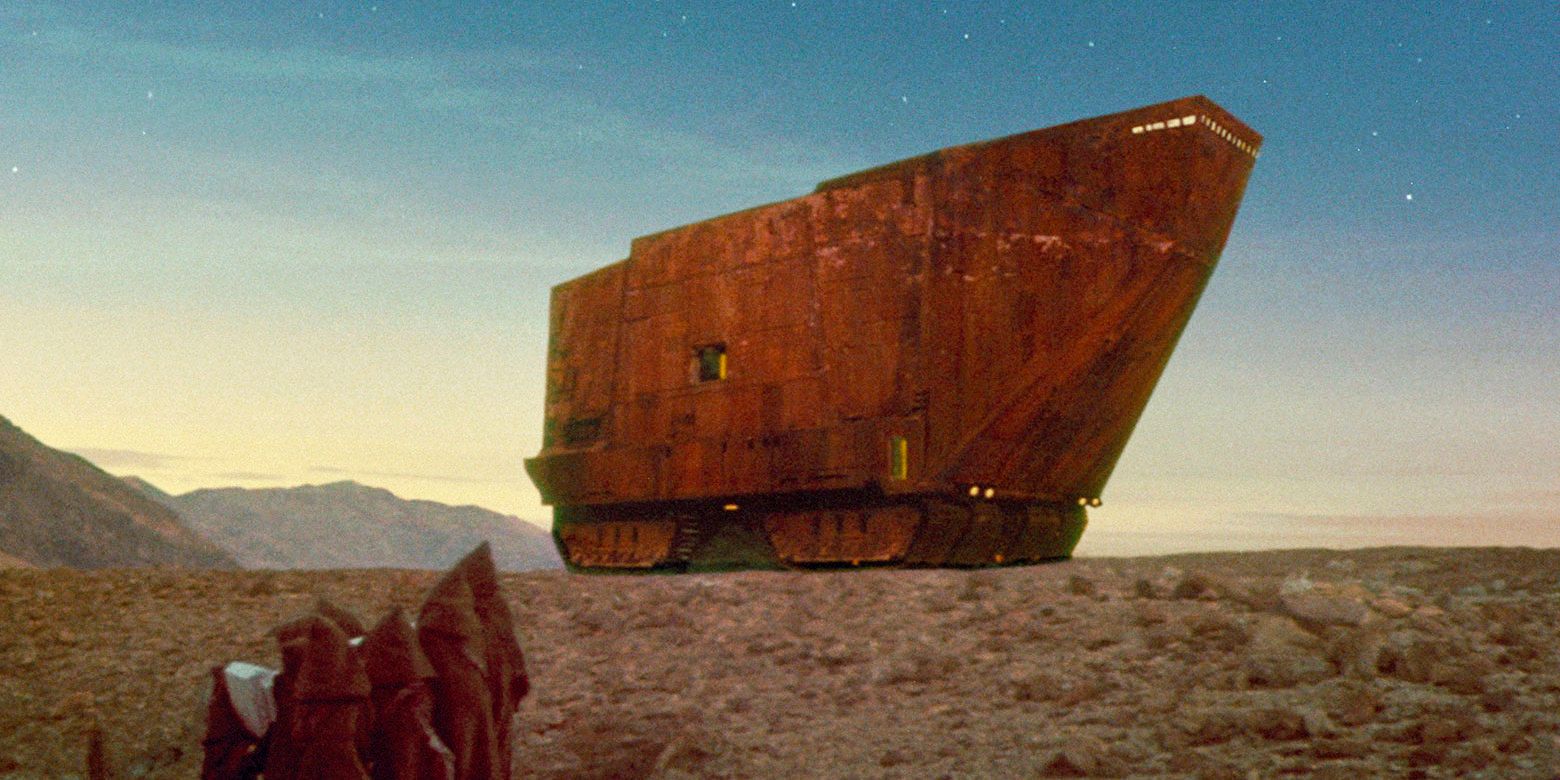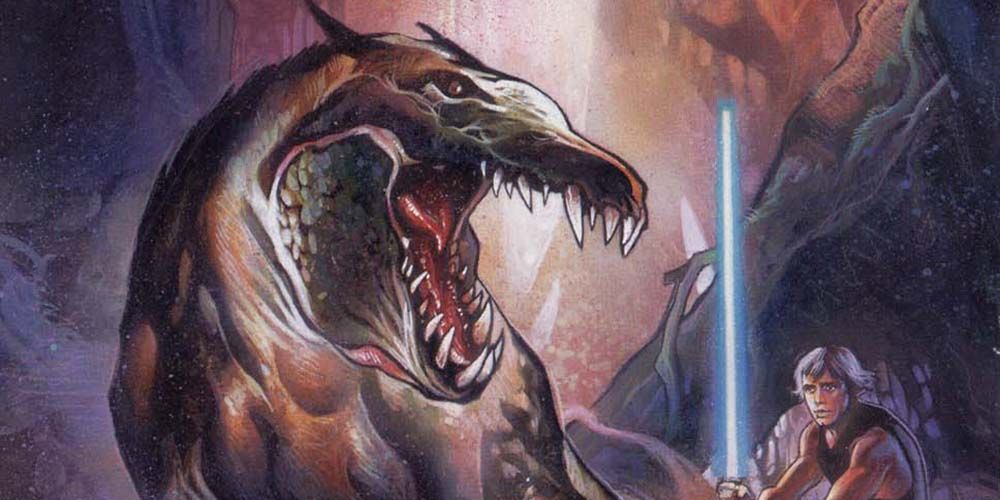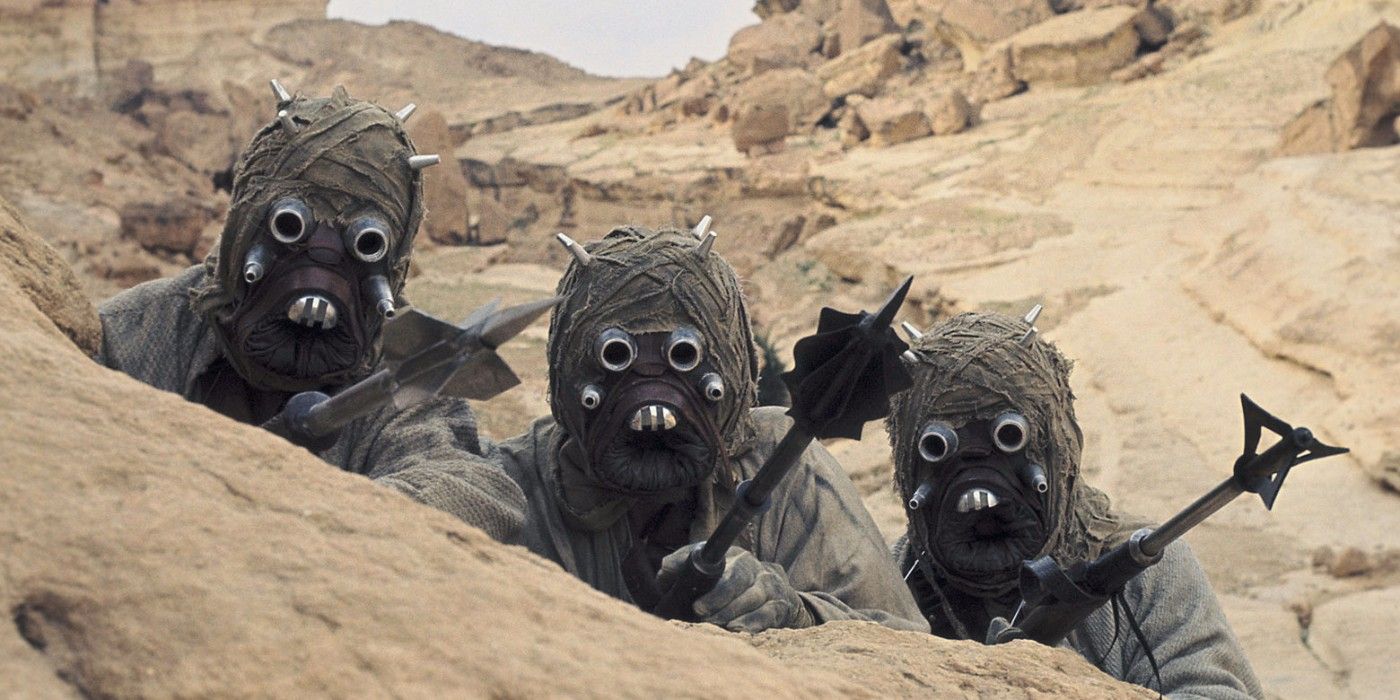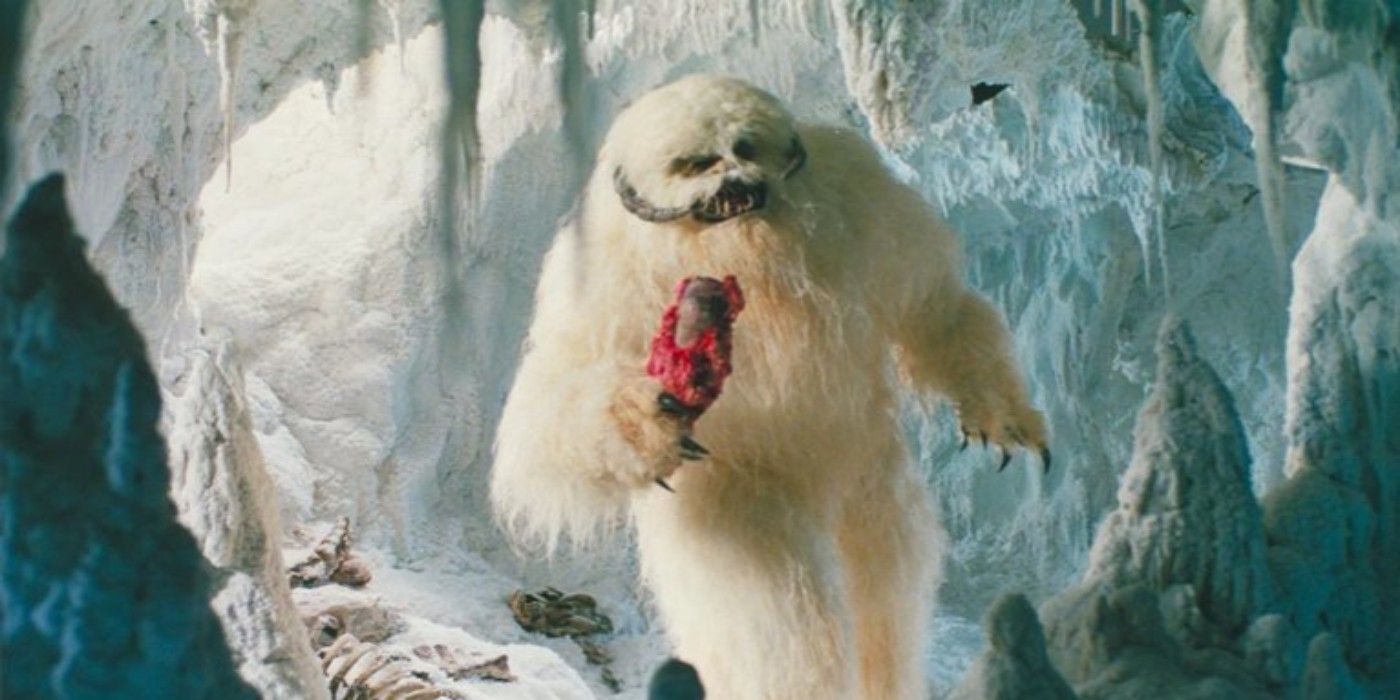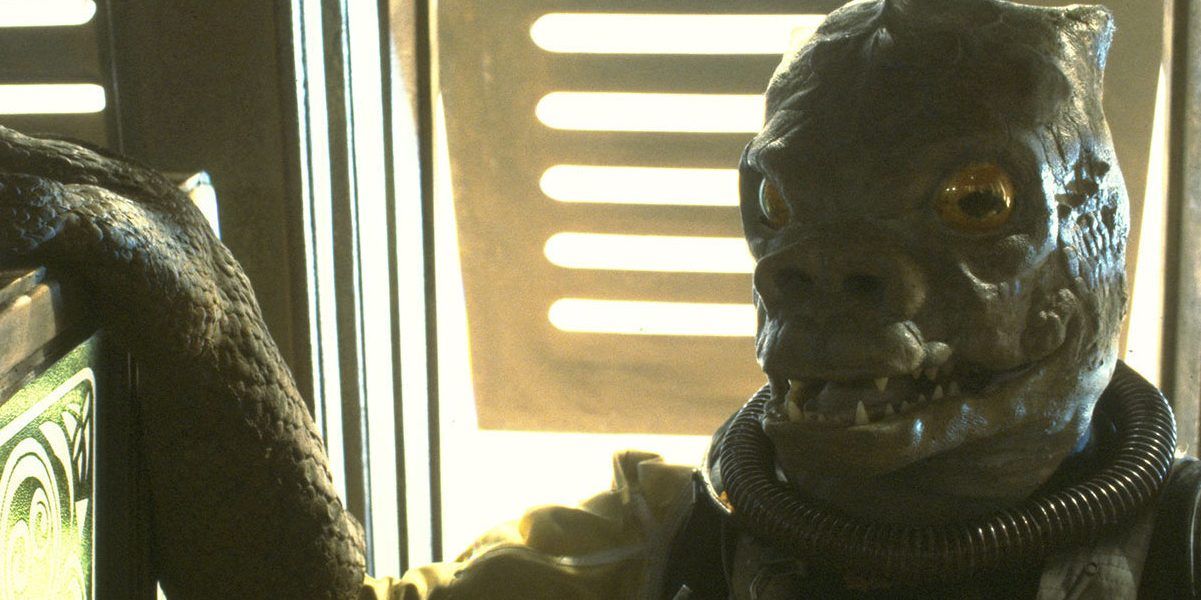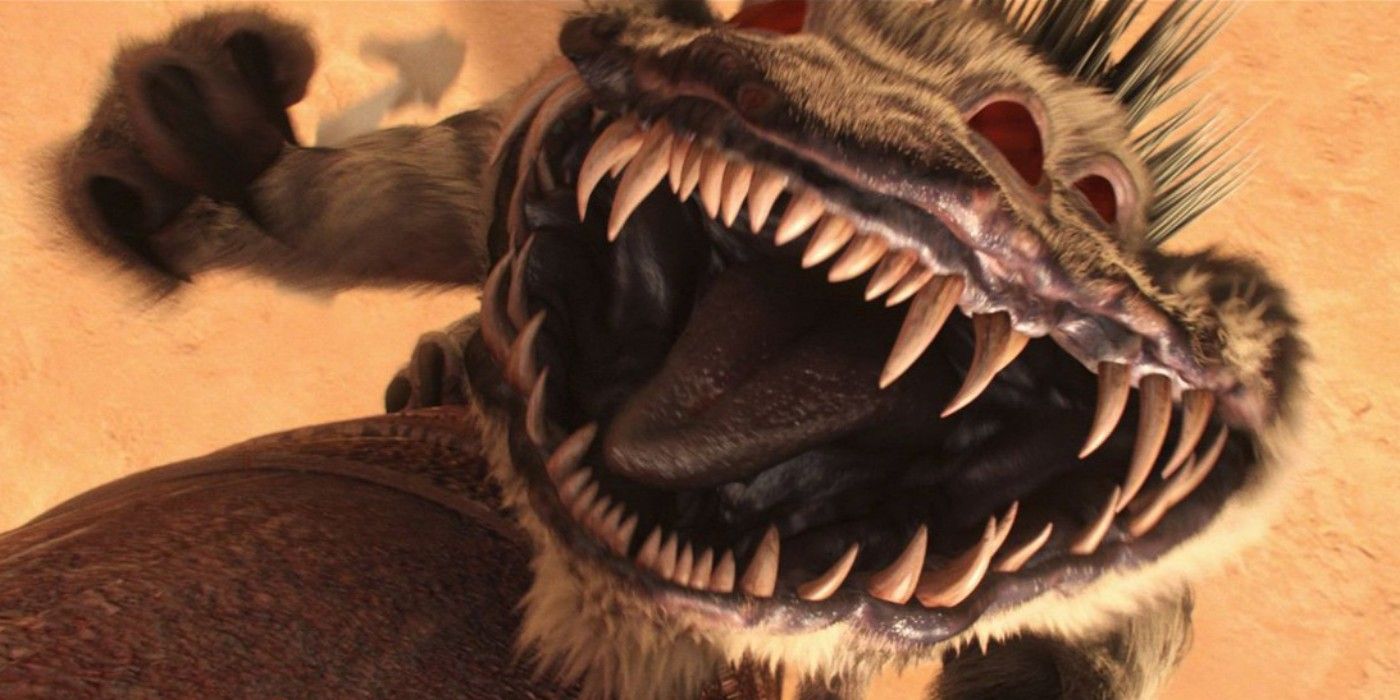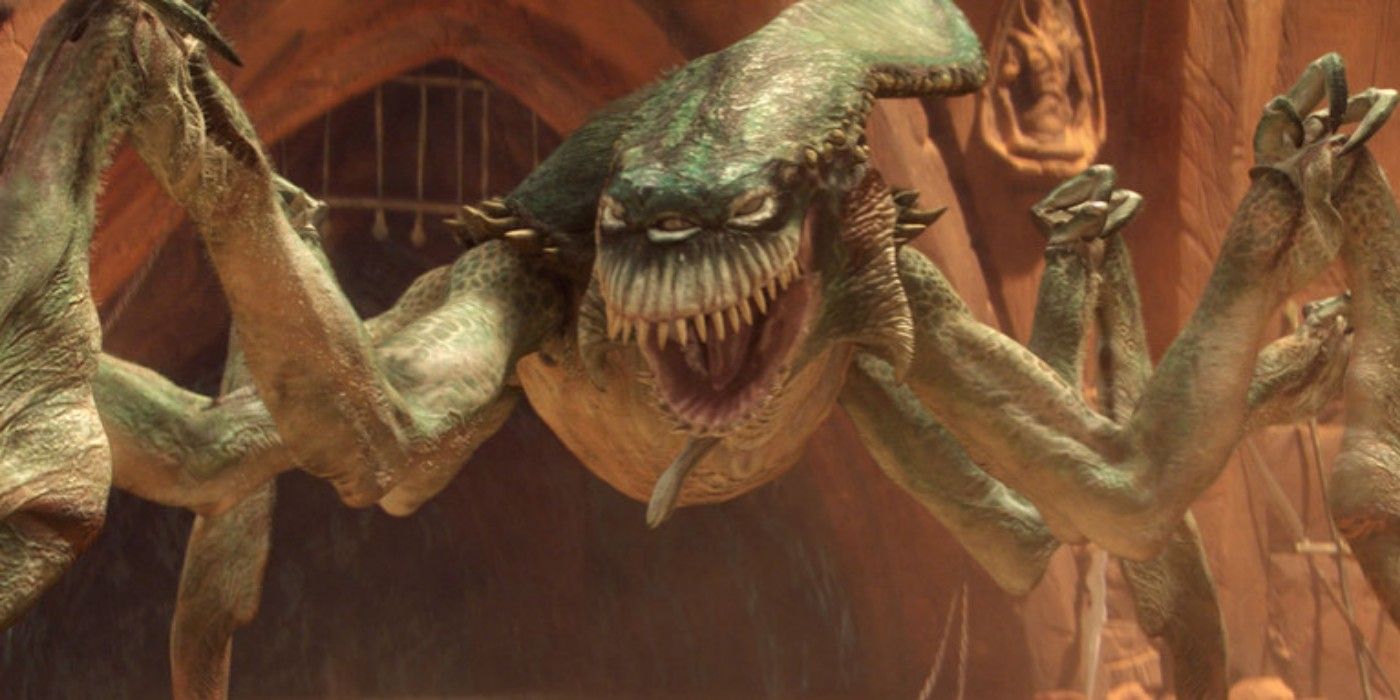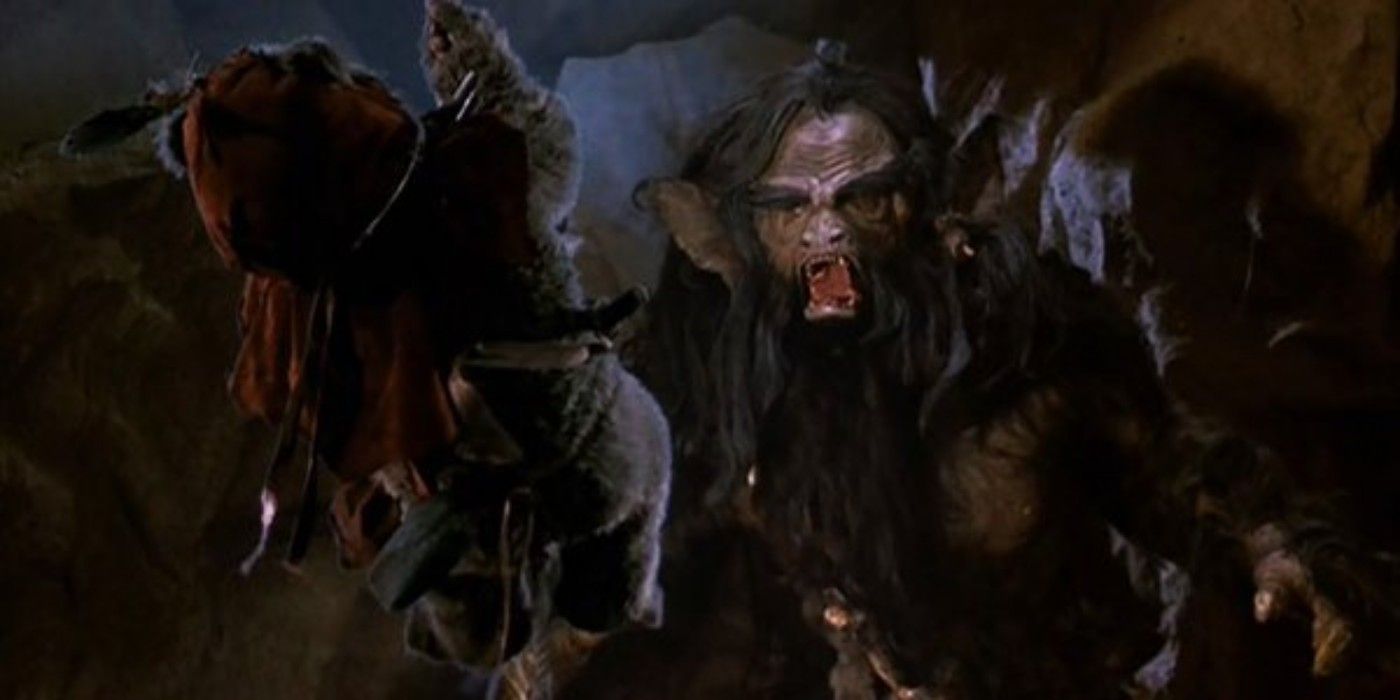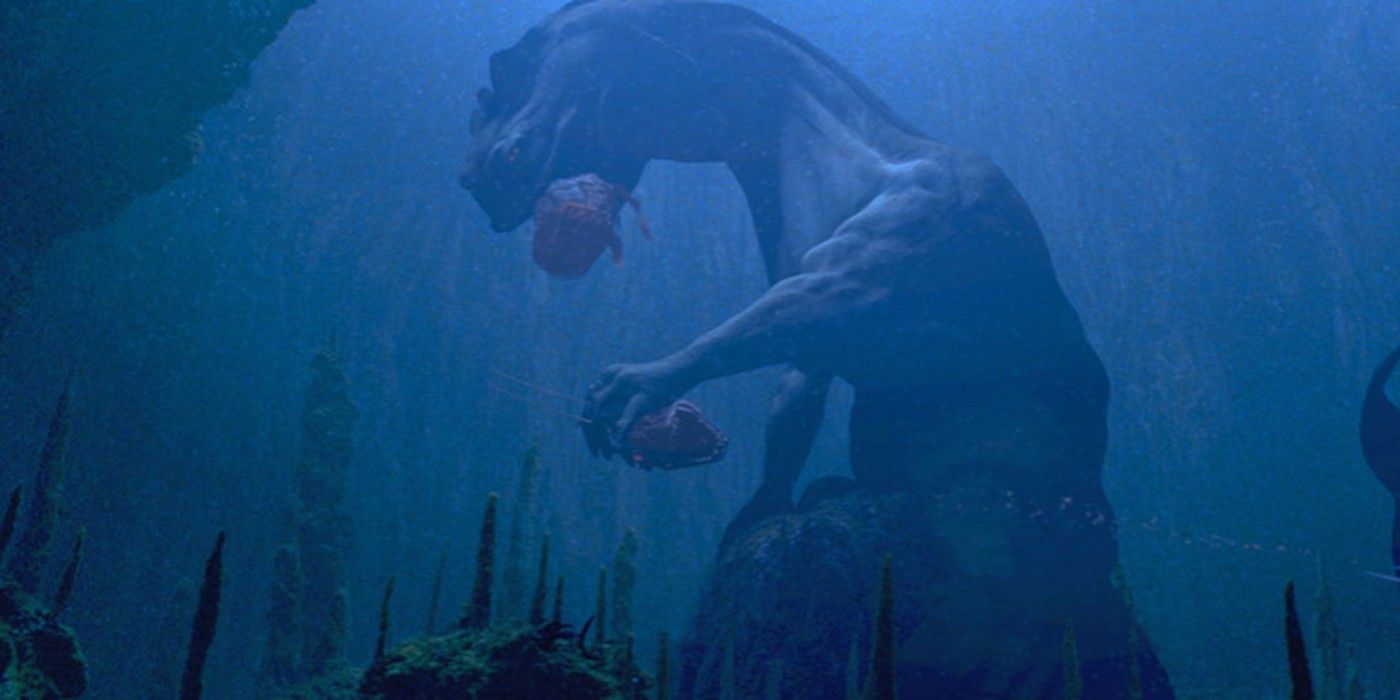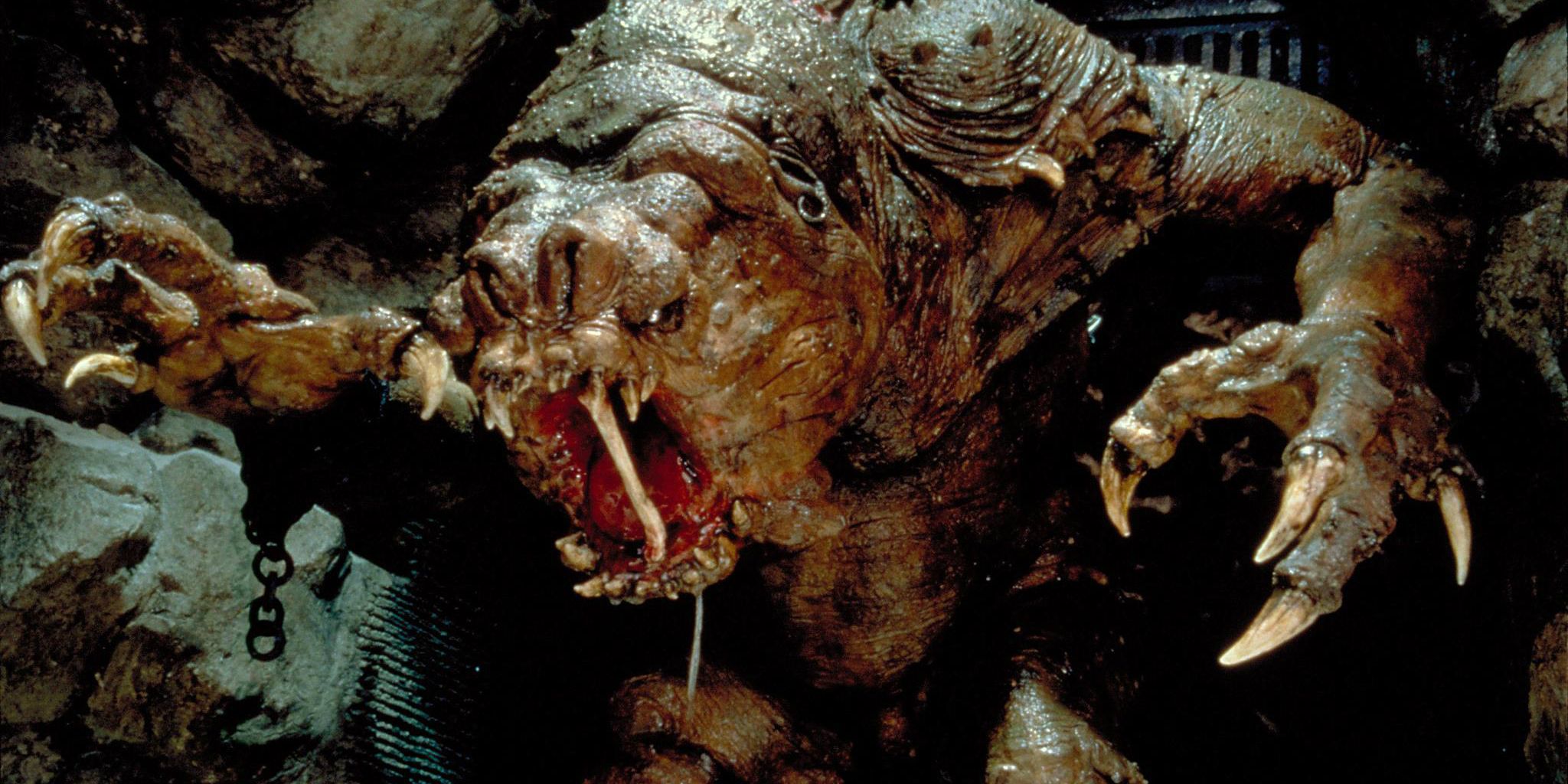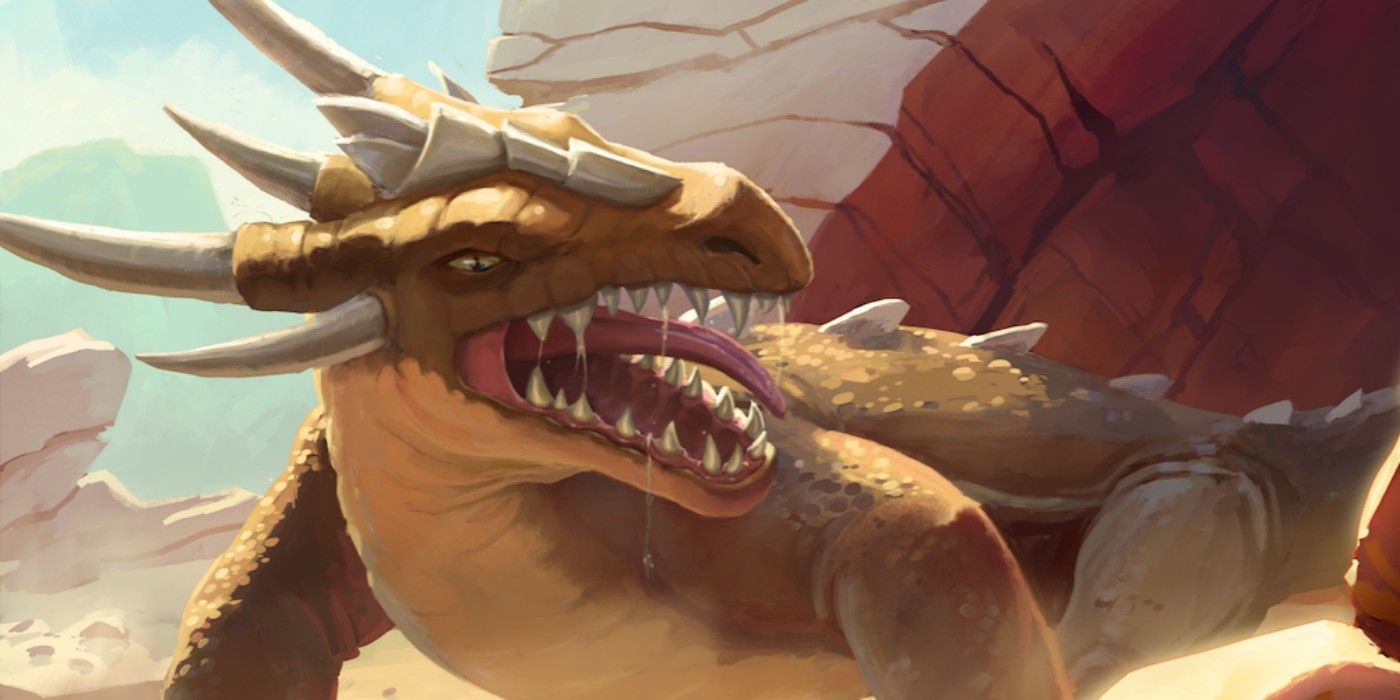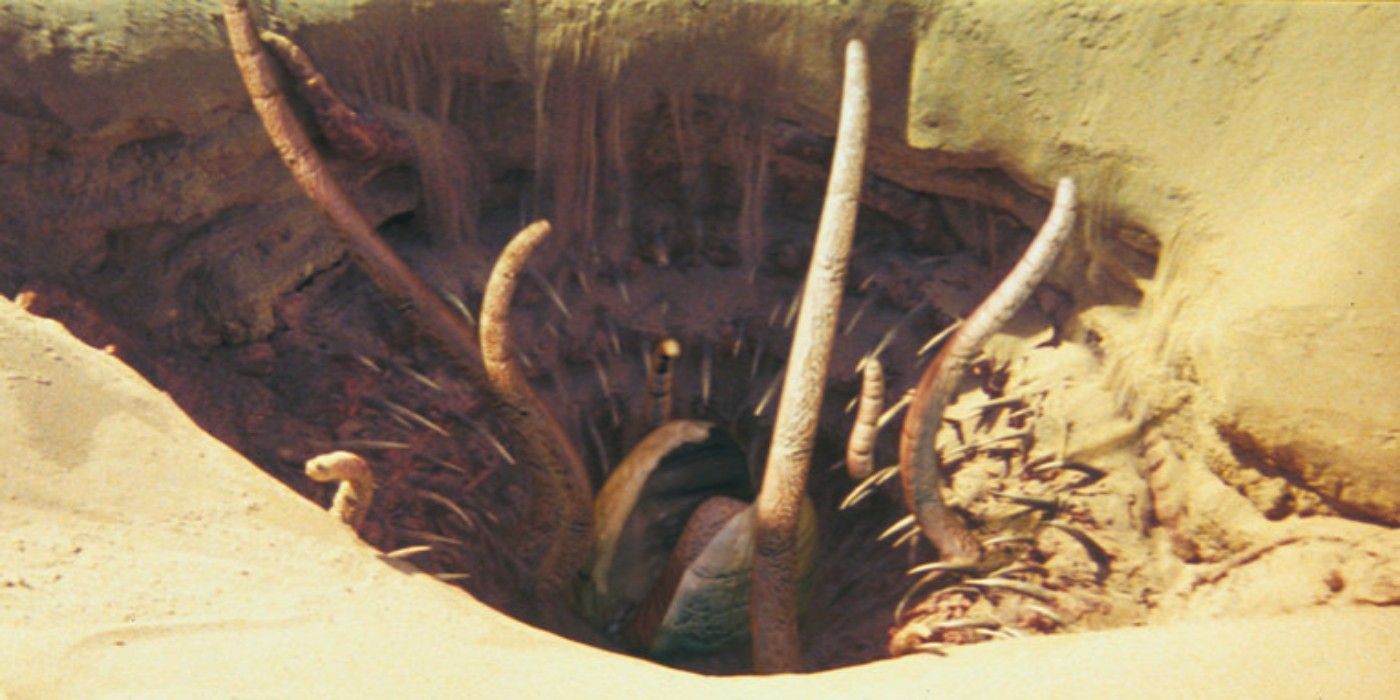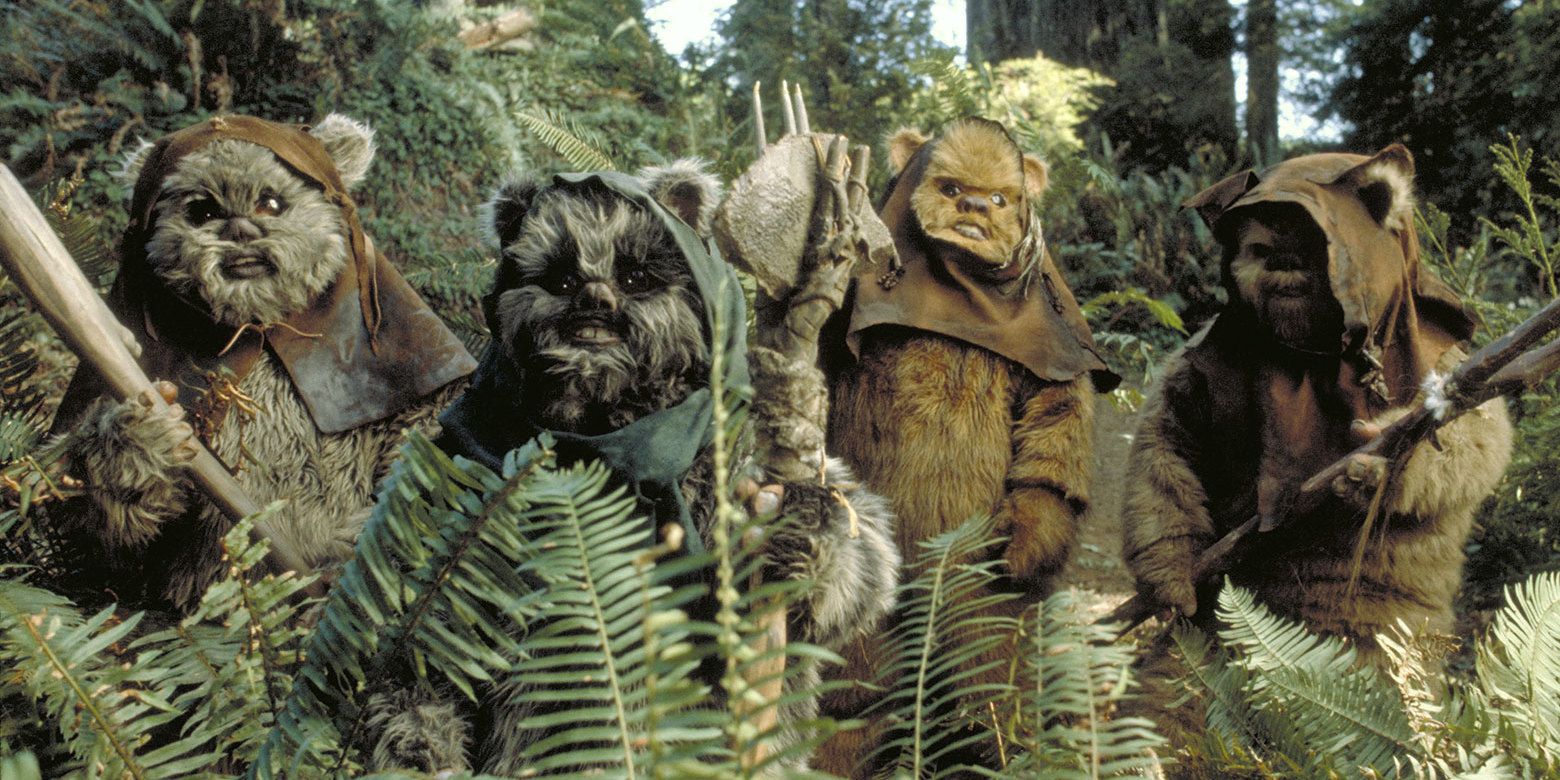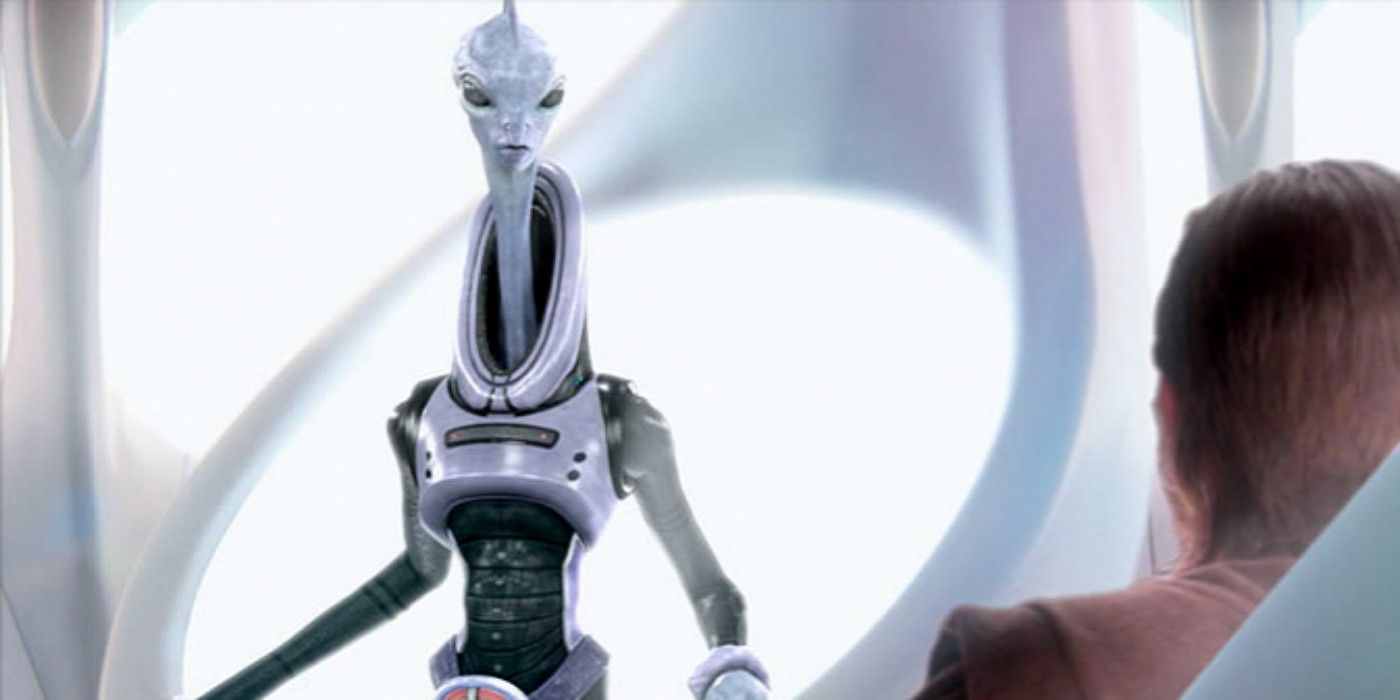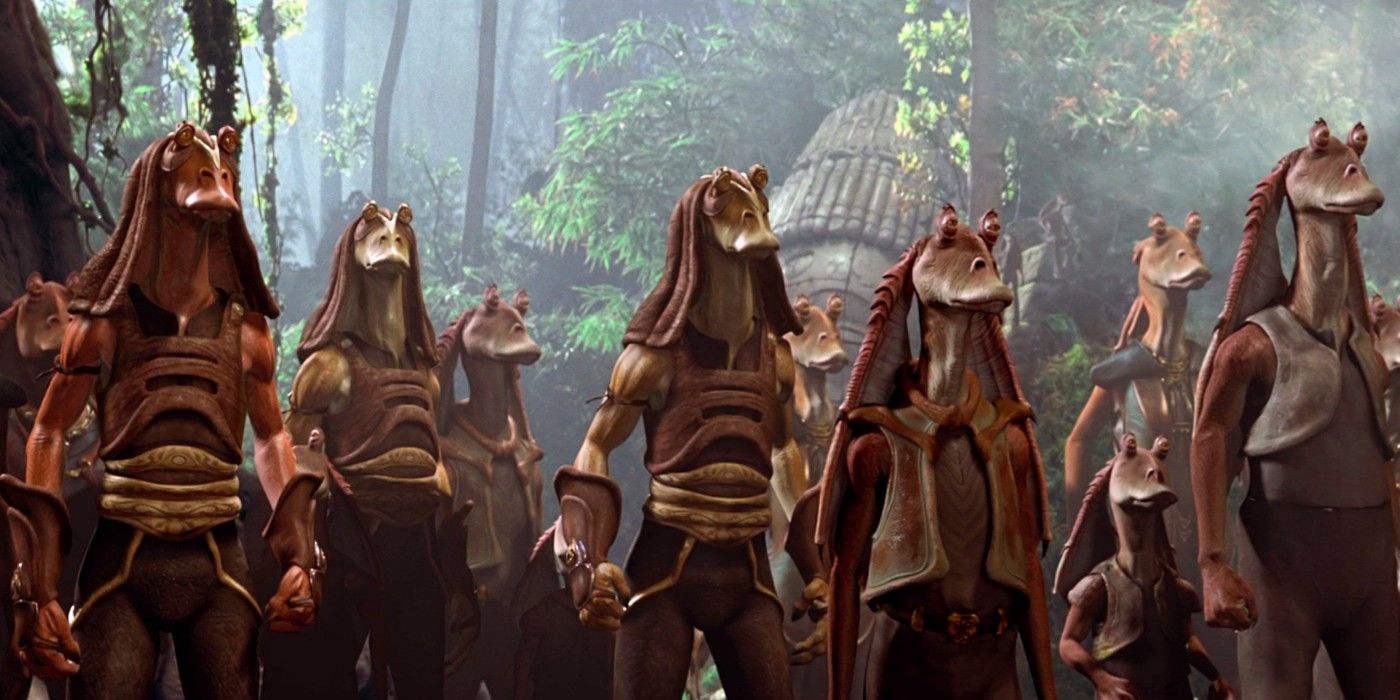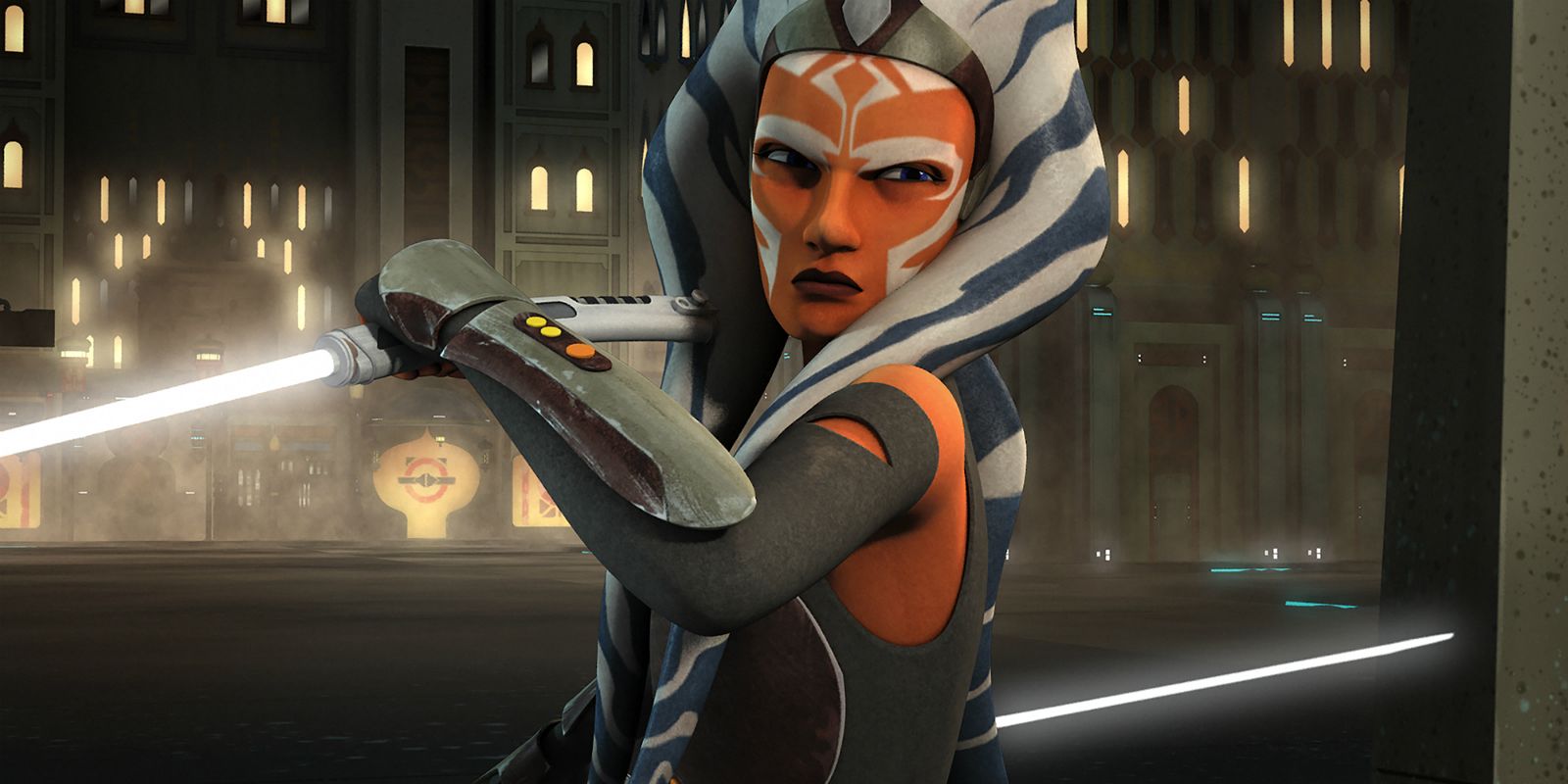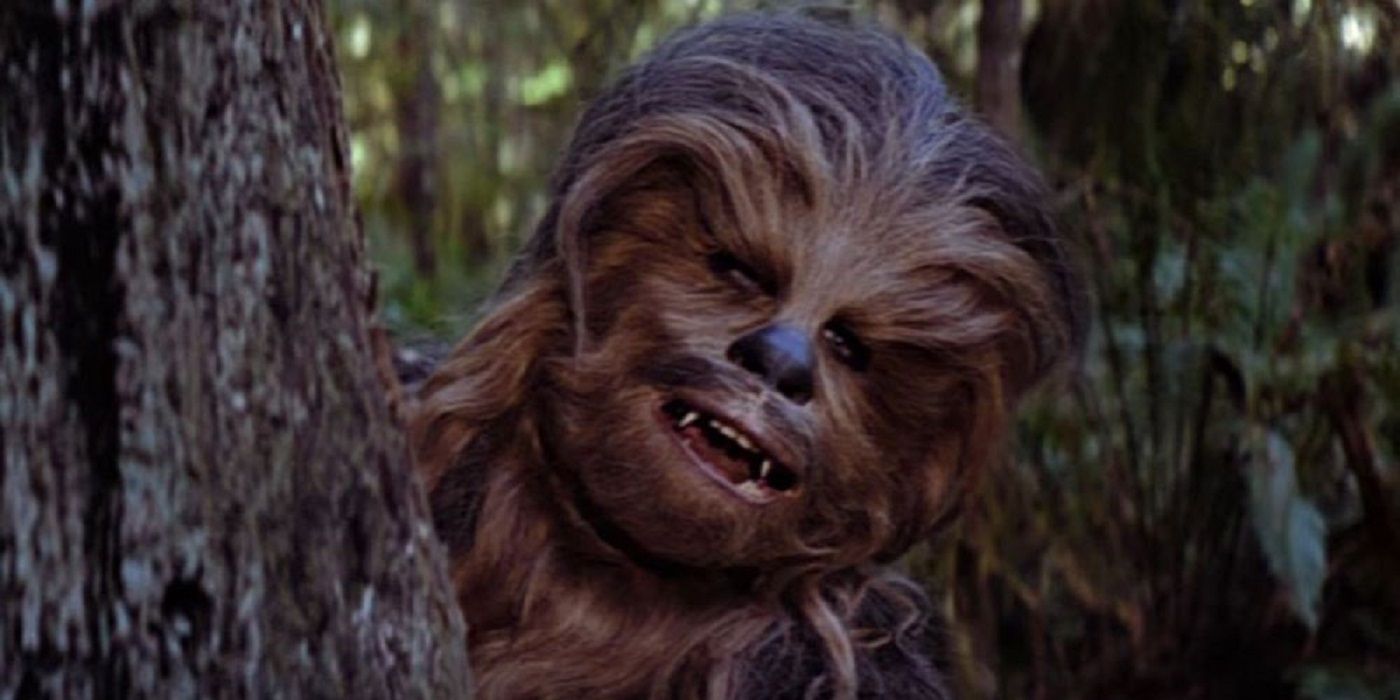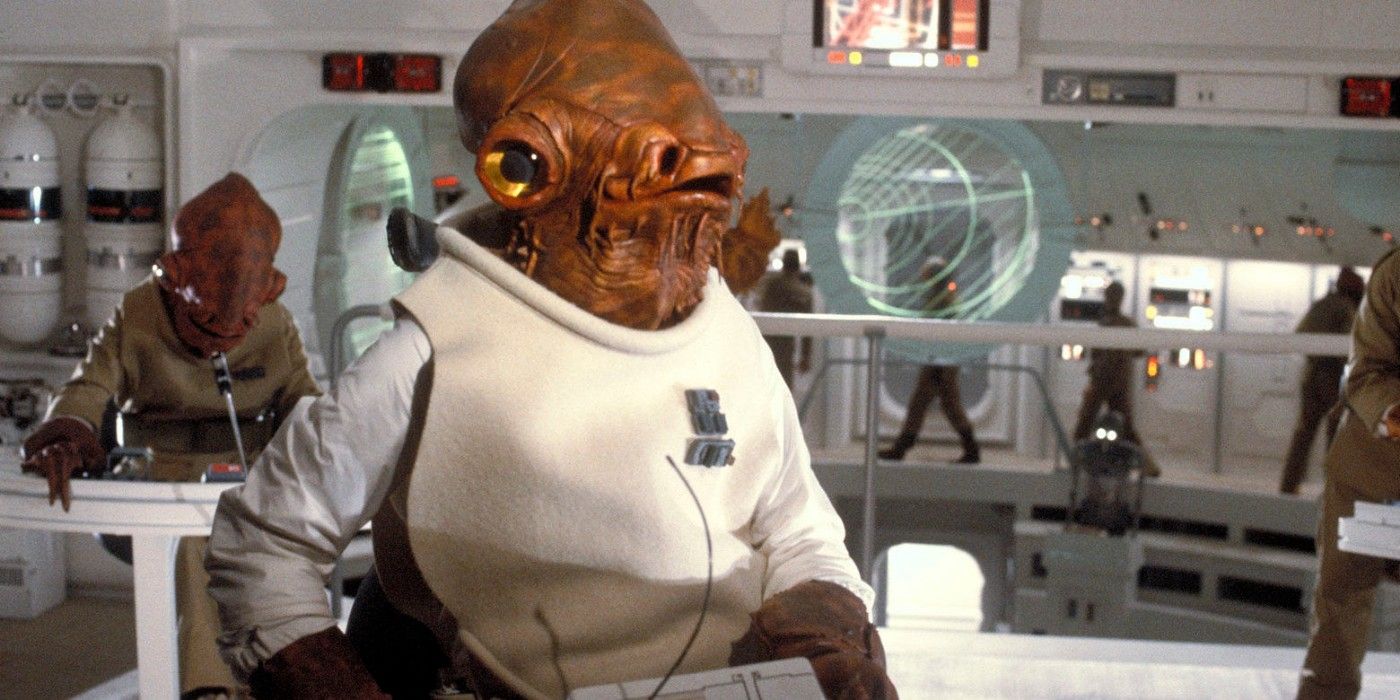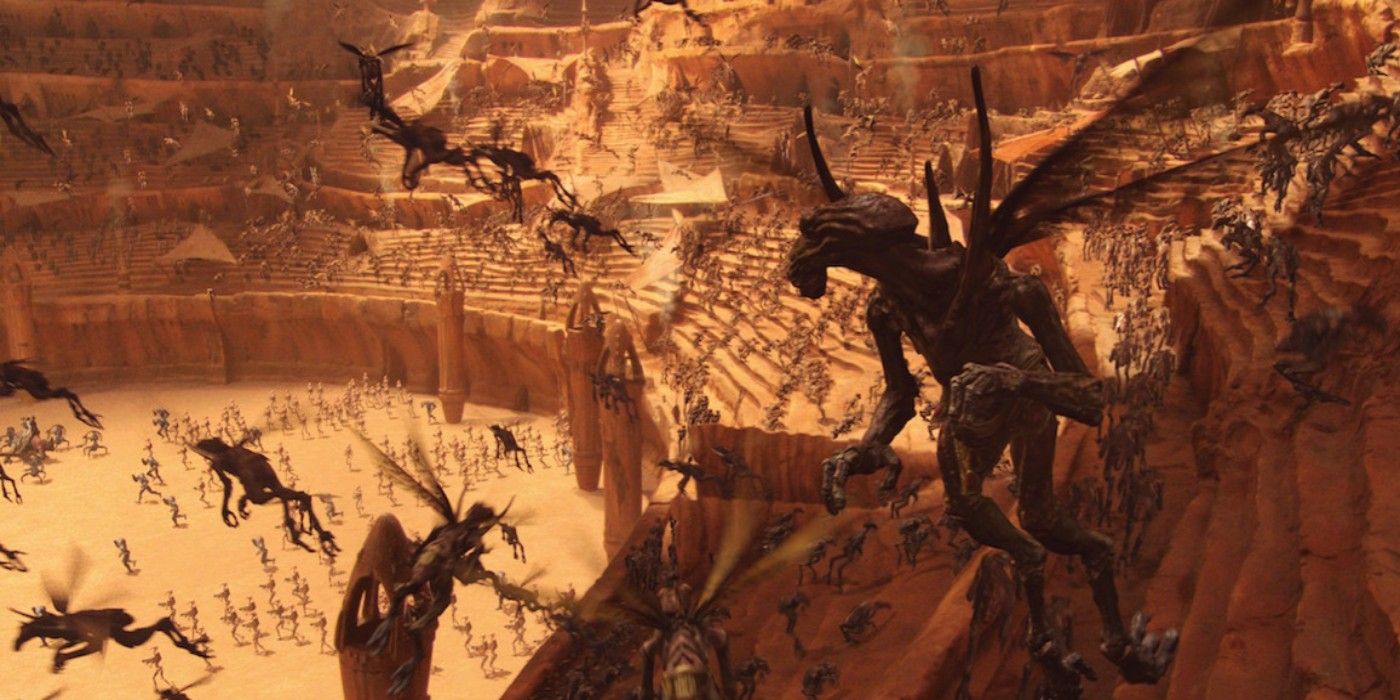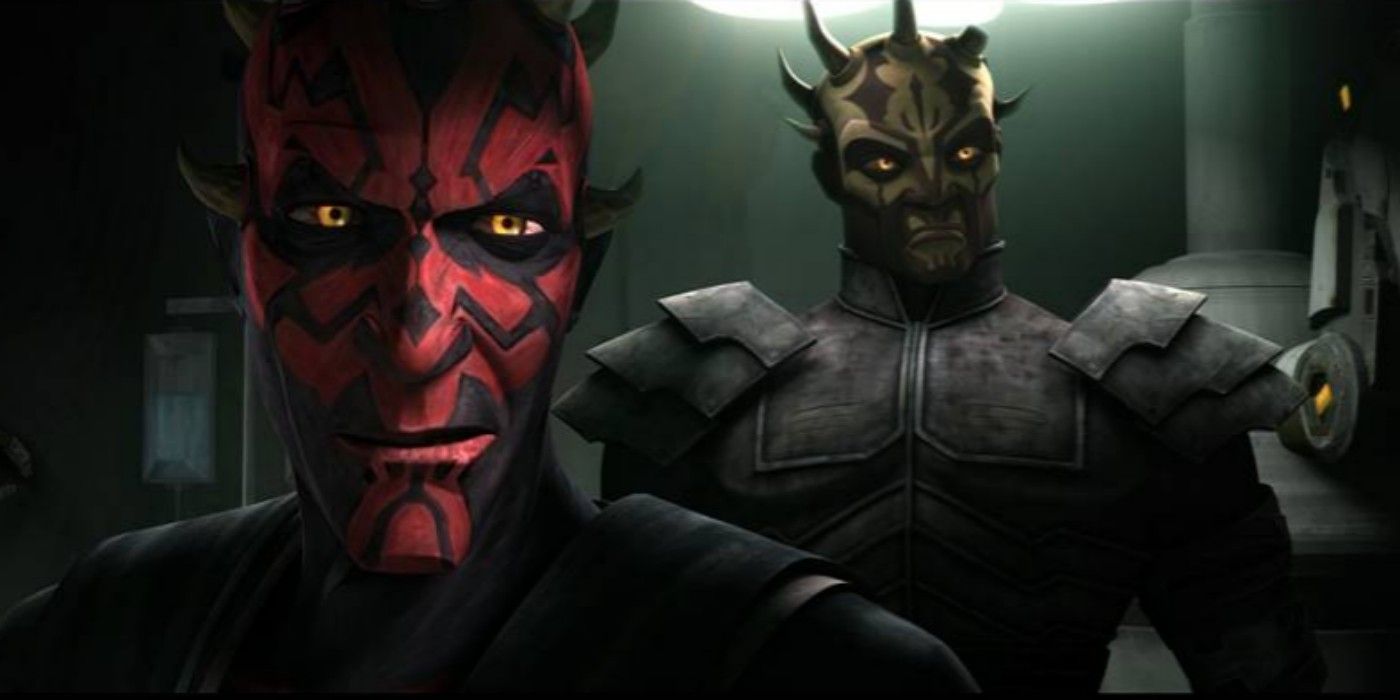The width and breadth of the Star Wars Universe can only be measured in the sheer number of species it contains. The plenitude of its many and colorful beings provides a foundation for many imaginative storylines, from tragic to heroic, and everywhere in-between. The galaxy far, far away that George Lucas created has dazzled audiences with beings both large and small, wherein some of the smallest accomplish some of the biggest changes.
From the moment that Luke Skywalker and Obi-Wan Kenobi walked into the Mos Eisley Cantina, everything about the Star Wars narrative changed. Until that point, the beings that audiences had seen were Jawas, Tusken Raiders, and droids. In that moment, our eyes traveled over creatures of every conceivable physical orientation. There were long snouts, huge eyes, scales, fur, and suddenly Luke and Obi-Wan found themselves some of the only humans in sight. Though the species of the Star Wars Universe are more numerous than this article can possibly contain, we’ve gathered 26 of the most powerful and ranked them accordingly. To qualify, they had to have some impactful moment either on screen or in the pages of Star Wars novels and comics, as well as influenced the machinations of the galaxy’s most prominent events.
26 JAWA
With their glowing orange eyes peering out suspiciously from dusty red hoods and furry, black grabbing hands, jawas make the galactic citizens they encounter put a hand over their pocketbooks. To see a jawa is to know two things: you might be about to get your possessions stolen or you might be able to strike a deal for theirs. Either way, you’re getting robbed. Known famously on Tatooine for being scavengers, jawas are in the business of trade and commerce at all levels. All levels of scrap and shoddily refurbished droids, that is. They hungrily comb the desert for anything they can trade to local moisture farmers, such as Luke Skywalker and his Uncle Owen, in the case of C-3PO and R2-D2.
Much speculation has been made about what jawas look like beneath their robes. Since jawas have been known to vary in height (most being a meter tall, some as tall as a human), Tatooine inhabitants have wondered if they are a devolved version of themselves, or some sort of mutated rodent creature. They smell atrocious, but that’s to their benefit, as scent plays a part in their use of Jawaese, which is impossible to understand by anyone other than a jawa -- perfect for discussing shady bargains. Since the abandonment of mining facilities on Tatooine, jawas utilized their leftover sandcrawlers as their main method of transport, filling them with debris from crashed ships, busted podracers, and droids.
25 VORNSKR
Graceful, agile predators, Vornskr are a species of Force-sensitive canine creatures that hail from the planet Myrkr. They live in packs, consisting of an alpha, beta, and several females. Females deliver litters of pups, and make their dens beneath large trees. They track and feast on the ysalamiri, creatures also sensitive to The Force, that have learned to project a bubble around themselves that nullifies its effects and dissuading Vornskr attacks. Because of the Vornskr lust for ysalamiri meat, they also have developed a taste for any Force-sensitive creature, including Jedi. With their sleek black bodies and whip-like tails filled with venom, they are perfect predators who prefer to stalk and stun their prey before devouring it.
The lightsaber dueling style of Jedi Master Mace Windu, Form VII, was once referred to as the Way of the Vornskr. The Jedi swordsman had once faced down several singlehandedly, and admired the precision of their coordinated attacks. The smuggler Talon Karrde, owner of two tamed Vornskr named Sturm and Drang, once used them as bait for members of the Yuuzhan Vong invasion. While he was successful in that endeavour, the Vong eventually would use the canine creatures for their biological experiments and create mutant species based off their DNA. Vornskr were also used as the guards of Sith temples.
24 TUSKEN RAIDER
On the windswept, desert planet of Tatooine local moisture farmers have to be on their guard wandering the wastes alone. Tusken Raiders, or “Sand People” frequently prey on unsuspecting travelers, especially those encountered alone. Their raiding parties, comprised of the males of their species, are known to be aggressive and incredibly brutal. They stand roughly two meters in height, garb themselves in tan robes to protect against the heat and sand, and use horned face coverings that resemble gas masks to conceal their features and make themselves more fearsome. Their weapon of choice is a war pike, which they use to beat their prey unconscious, as well as a long distance rifle to pick off prey from a distance.
Tusken Raiders live in huts comprised of a combination of coarse canvas-like fabric, and a mixture of mud and water they use to harden and shape it around wooden structures. The women tend to the young and scavenge, while the men make raiding parties and set off in search of victims that get lost among the dunes. They are known for the domestication of banthas, the large, shaggy beasts with encircling horns that lumber across Tatooine. Though slow, the men ride them into battle, while the women use them as beasts of burden around their encampments. Bantha steak is a renowned food staple on Tatooine, and bantha milk is rich in nutrients and has a pleasant taste.
23 WAMPA
Though it might not seem like anything can really survive on Hoth (what with tauntauns dropping like flies near a Hutt’s backside), the wampa manages to trudge the glacial tundra with a thirst for the kill. Standing a hulking mass of white fur at over three meters, it had sharp claws at the end of its massive arms, flesh-tearing teeth, and round horns. Packs of wampas often attacked the Rebel Alliance base on Hoth, requiring signage be posted warning of their potential presence.
While doing a routine scouting mission outside Echo Base, Luke Skywalker was attacked by a wampa. It slaughtered his tauntaun and rendered him unconscious. While it feasted on Luke’s mount, it left him hanging upside down in its ice cave. Wampas often sneak up on their prey, stun them, and fuse them to the ceiling of their dwellings. In this manner, they can come back for seconds and thirds of their victims whenever they please. Their ice cave acts like one massive refrigerator. Luke eventually has to concentrate (while the blood is rushing to his head) and use The Force to bring his lightsaber to his hand. The wampa, sensing its midnight snack is about to escape, charges over to deliver the killing blow, only to have its arm sliced off. Behind the scenes knowledge from The Empire Strikes Back suggests that the wampa scene was added to explain the slight change in actor Mark Hamill’s face after a car accident disfigured it, requiring plastic surgery.
22 TRANDOSHAN
Like the wookiees, Trandoshans are a bipedal species of warriors that relish honorable deeds. Unlike the wookiees, Trandoshans also relish the hunt, and claim trophies from their victims to earn status. Perhaps this is why the wookiees, known for being unmaterialistic, despise the Trandoshans... or perhaps it's because they tend to enslave them. Trandoshans are tall, smooth-scaled reptilian creatures with orange eyes, snouts, and strong arms that end in three-digit clawed hands.
Trandoshan clans erected an immense game preserve on the moon Wasskah during the time of the Clone Wars, where they hold complex hunts by releasing captured prisoners into the environment or by waiting for wayward travelers to land on the moon itself. They welcome the sport the hunt provides, and many Trandoshan males earn the honor of their clan by being successful in their first hunt. One of the most infamous Trandoshans in the galaxy is Bossk, who made his first appearance in The Empire Strikes Back as one of several bounty hunters Darth Vader hired to track down the Millennium Falcon and capture Han Solo. It’s the Mandalorian bounty hunter Boba Fett that claims the prize, who Bossk had worked with on several occasions. Fett found him ruthless, like the vast majority of his species, but not without cunning intelligence to match his ferocity in battle.
21 NEXU
Found on the planets Cholganna and Zhanox, the graceful and terrifying Nexu are known for being agile and stealthy predators. Measuring four and a half meters, covered in white and purple striped fur and quills, they had abnormally large mouths full of razor-sharp teeth as well as sharp claws. Though feline in appearance, their four red eyes made them have an arachnid quality. Fast and cunning hunters, their light weight made them perfect killing machines, though their lack of bulk made them easy to incapacitate (provided you could get a hit in).
When Obi-Wan Kenobi, his apprentice Anakin Skywalker, and Padme Amidala found themselves in the Petranaki Arena on Geonosis, a Nexu was one of the foes they faced. Though they were in a gladiatorial arena, the fight was anything but fair as they were chained to poles, and intended to be executed. Padme found herself facing off the Nexu, but her quick reflexes and resourcefulness found her able to use her chains to climb her pole. She was then able to use it to strike at the head of the Nexu, which could occasionally scale it and get a few good swipes in to her. It was all thanks to the Nexu that Padme’s outfit became a tattered two-piece.
20 ACKLAY
On the watery world of Vendaxa, acklays are a species of amphibious reptilian crustaceans that can live both in the sea and on dry land. With an armored shell covering their bodies, six skin-covered and calloused legs, and hands that it used to grapple it’s prey with as it brought it towards its needle-filled mouth. A vestigial organ beneath its chin helped it locate prey by electrical currents it emitted, which it would then attempt to spear with its legs. Their sharp teeth minced their prey, and their stomachs could expand to three times their initial size, implying the acklay could pack in quite a few Jedi snacks.
In the Geonosian arena of Petranaki, an acklay went after Jedi Master Obi-Wan Kenobi, and it was only after getting a spear away from a Geonosian picador could the Jedi begin to fight back. Though he was pleased to deliver a decisive blow to the scuttling creature, a decisive snap of its jaws broke the spear and left him helpless. It was only after Master Mace Windu and his assault team of Jedi stormed the arena and gave Obi-Wan a lightsaber could he deftly neutralize the beast’s threat. It was one half of a mated pair kept at the arena, so somewhere, a lone acklay mourned the loss of its feisty partner.
19 GORAX
In case you thought nothing bigger than an Ewok lived on Endor, be glad you never ran into a Gorax. Giant, shaggy creatures with gnarled faces and long ears, they raided Ewok villages for their meals, and sometimes just because they didn’t like the little fuzzy buggers. Five times the size of a human and known for their ornery temperament, the Ewoks lived in constant fear of a Gorax attack. A Gorax could not only swallow an Ewok whole (or five), it could also rip a tree out with ease, roots and all, meaning entire Ewok villages could be torn down in a matter of minutes.
Gorax first appeared in Caravan of Courage: An Ewok Adventure, which premiered in 1984 on national television. It followed a family of colonist scientists who crash land on the planet of Endor and have to survive with two small children. The parents are kidnapped by a Gorax, who takes them back to its lair in the mountainous region, leaving the children no choice but to appeal to the Ewoks for help in rescuing them. The young girl Cindel befriends Wicket, whose diplomatic skills had been instrumental in getting the Bright Tree Ewoks to rally around Princess Leia and the Rebel Alliance’s fight against the Empire.
18 SANDO AQUA MONSTER
Some people don’t go swimming because of jaws. Some gungans don’t go swimming because of the Sando Aqua Monster. Twice the size of a Sarlacc, these carnivorous creatures dwell in the oceans and lakes of Naboo. Due to their enormous size, and the effort it takes for their enormous limbs to tread water, they have to constantly feed. Their diet consists of everything from entire schools of fish to the chewy opee sea monster. Sandos are powerfully built creatures, with long felinoid bodies that ripple with muscles. Their giant mouths contain multiple rows of sharp, needle like teeth, which they used to slice through the flesh of their prey.
Many legends exist about these majestic and terrifying creatures, contributed to by Naboo citizens and small children. Knowing the truth about their habits would be easily done, if the Naboo were ever interested in asking a gungan. Much of what anyone knows about Sandos has come from gungan exploration and a few researchers from the surface. Sandos have a lifespan of about a hundred years, and females bear only one pup at a time. Due to the fact that they have both claws and flippers, it’s believed that they evolved from land dwelling mammals. Most had never been close enough to observe their eating habits, but Qui-Gon Jinn, Obi-Wan Kenobi, and Jar Jar Binks got a full show when they witnessed a Sando tearing into the opee sea killer that had been chasing them.
17 RANCOR
One of the most iconic species in Star Wars canon is the rancor, a massive monster from the planet Dathomir. One in particular, a female, found fame beneath Jabba the Hutt’s palace as his pet (as well as a major deterrent to negotiations that didn’t go in his favor). Rancors stand five meters tall, have arms that are twice as long as their legs, and have massive claws but relatively small mouths. Their hide is thick and resistant to blaster fire, making them formidable opponents.
Though they are found predominantly on Dathomir, a sub-species of rancor, called the “jungle rancor” can be found on the planet of Felucia and also Teth. While known for being particularly ornery and vicious to prey, rancors are fiercely protective of their young. A carnivorous species, both male and female rancors hunt for food, either for themselves or for their brood. Rancors have been known to be domesticated, as they were by The Force-sensitive Night Sisters. According to Star Wars Legends, the Night Sisters use a combination of The Force and witchcraft to create incantations and conjure visions. They are known to ride rancors, utilizing them for their intimidating physical qualities as well as their known tempers.
16 KRAYT DRAGON
There are many species to be wary of on the remote, desert world of Tatooine; Tusken Raiders, the Sarlacc, disgruntled Jawas. Perhaps the most dangerous is the Krayt dragon, a giant reptile that is hunted for the pearls in its stomach. They are the apex predators on the hostile world, and everyone from the moisture farmers to the herds of migrating banthas fear being picked off by one. The skeleton of a Krayt dragon is visible when C-3PO and R2-D2 crash land in their escape pod in A New Hope, and Obi-Wan Kenobi uses the call of a Krayt dragon to frighten Tusken Raiders away from Luke Skywalker and his landspeeder.
Krayt dragons come in two sizes; a smaller “canyon krayt”, and a larger “great krayt”. They produce a krayt venom that helps them in pre-digesting their food. The pearls that are formed in their stomachs fetch a high price, and so they are hunted by species both native and non-native to Tatooine. Their wingspan is well over 30 meters, they have an armored hide, and they have several large horns protruding from nobules at the crest of their skulls. During the rise of the Galactic Empire, Darth Sidious's apprentice, Count Dooku, captured and tamed a krayt dragon to keep as a formidable pet and to use in his training as a Sith.
15 SARLACC
“There you will discover a new definition of the word ‘pain’, as you are slowly digested over a thousand years,” said C-3PO to Luke, Han, and Chewie as they stood overlooking the Pit of Carkoon. Just beneath their skiffs nested the Sarlacc, a great creature with tentacles that stretched far beneath the Dune Sea on Tatooine. Only a few of them were exposed to the scorching twin suns, as well as several rows of long, needle-like teeth, and a beaked tongue that darted out to grab onto victims. The Sarlacc in the Pit of Carkoon was Jabba the Hutt’s pet, which he liked to feed via the execution of his enemies in Return of the Jedi.
Sarlacc begin as spores. When a male and female Sarlacc encounter one another, the much smaller male attaches itself to the female and parasitically feeds off of her until he is equal to her size. At that point he bursts, sending millions of spores out into the atmosphere. When they are fully matured to 100 meters, they burrow into the surface of whatever planet they find themselves on, where their appendages (and several stomachs) branch off into all directions. Victims are swallowed whole, and injected with neurotoxins that paralyze them. They are conscious as they are digested over a millenia. As an added precaution so it won’t lose its meal, the Sarlacc’s sharp teeth prevent them from being able to climb back out.
14 EWOK
Living on the remote forest moon of Endor, and consisting of a hunter-gatherer society, the Ewoks don’t concern themselves with the larger goings-on of the galaxy. They offer little in the way of resources or technology, and their existence is overlooked by governing bodies. Ewoks live in immense interconnecting tree houses high above the forest floor, and subside on a diet of nuts, berries, and meat, prefering to hunt with spears, knives, and slings. While not terribly large (they stand at just over a meter tall), they turned out to be a formidable opponent for the Empire by the time they encountered them.
When they were first introduced in Return of the Jedi, public opinion didn’t hold Ewoks in high regard. Originally, George Lucas had wanted to set the Battle of Endor on Kashyyyk, the homeworld of the Wookiees. Unfortunately, budget constraints prevented that (though a different battle featuring wookiees was made possible by the time Attack of the Clones was made). Looking more like homeless Care Bears, the Ewoks weren’t very impressive. Though they only had the equivalent of stone age technology, they nevertheless utilized catapults and hang gliders to confuse their enemy and deliver decisive blows. These blitz attacks helped to distract Imperial forces and give the Rebel Alliance time to dismantle the shield generator on Endor. Though the Ewoks were not a part of the Republic (and had no representation in the Senate), they joined the New Republic following the end of the Galactic Civil War.
13 KAMINOAN
Tall, ethereal, and elegant, Kaminoans are the fish giraffes of the galaxy. Their heads rest on eerily long necks, and their huge black eyes have white pupils, making them both bizarre and able to see in the ultraviolet spectrum. Kaminoan scientists specialize in controversial cloning technology, their facilities located on their home planet of Kamino. They were contracted by Jedi Master Sifo-Dyas to create the Grand Republic Army entirely of clones from the bounty hunter Jango Fett. Why exactly a bounty hunter? Who knows -- the Kaminoans didn’t ask questions, they just took the credits and dumped accelerated growth hormones in the babies feeding tubes (as well as inserting the bio-chip with Darth Sidious’s infamous Order 66).
Taking their inspiration from Steven Spielberg's Close Encounters of of the Third Kind, the look of their large, almond-shaped eyes and willowy limbs evokes a classical take on extraterrestrial beings. Kaminoans are aloof, guarded, and very private. They do not express any outward emotions, having more in common with the socio-behavioral discipline of their clones. Nevertheless they are polite, cordial, and accommodating. Their tone is never quick to anger, and many species in the galaxy find their voices soothing. Though their cloning facilities exist above the ocean floor of their homeworld, they dwell beneath the waves in large underwater cities. To exit to the surface, they ride large winged creatures that resemble stingrays. When the Empire rose to power, the cloning facilities were shut down.
12 GUNGAN
To the detriment of civilized gungans everywhere, audiences were first introduced to their species in The Phantom Menace, when Jedi Master Qui-Gon Jinn literally ran into Jar Jar Binks after he’d crash landed on Naboo. According to the klutzy gungan, he was attempting to acquire his morning meal when he heard the cacophony of the battle droid skiffs moving through the trees and brush. He, like every semi-sentient creature in the vicinity, was anxious to get as far away from the sound as possible. He was a tall, gangly biped with long jointed fingers, trunk-like legs, and an amphibious head with a long snout and stalked eyes. Their physical traits are advantageous since they mostly dwell underwater, but different races of gungan can adapt to live on land. Jar Jar is an “Otolla”, the lankier version of a gungan, while the “Ankura” are more heavyset. Both sport haillu, long earlobes that display emotion and also hit unsuspecting Jedi in the face.
Gungans had an uneasy coexistence with the human inhabitants of Naboo, until the Trade Federation blockade and subsequent conflict forced them to become stronger allies. The Naboo were glad to have the assistance of gungan technology. Far from primitive, gungan tech is biomechanical and incorporates gungan ecology. Weaponry such as bubble shield projectors and fambaa balls use plasma energy that gungans mine from the planet crust. They had an understanding of The Force due to their communion with nature, though their Force sensitivity was low.
11 TOGRUTA
Despite their brief appearance in the Star Wars prequel films, the Togruta are nevertheless a well known species thanks to their distinctive look and powerful Force abilities. The Togruta are often mistaken for Twi’lek, thanks to the fact that both species share headtails. While both species use their headtails as sensory equipment, the Togruta’s headtails are highly decorated, and they also have horns that sprout from the top of their heads. Originally from the planet Shili, they have a thirst for warfare, which makes them surprising candidates for the Jedi Order given its principle philosophies of serenity.
The famous Jedi Master Shaak Ti was a Togruta, as was her apprentice, the feisty and reckless Ahsoka Tano. Both featured prominently in the Clone Wars animated series, it was Ahsoka Tano that became a breakout star. It was Jedi Master Plo Koon that discovered her on her homeworld and brought her to the Jedi Temple to receive her training. A gifted and strong student in the ways of the Living Force, she was assigned to Anakin Skywalker as his apprentice. Whereas his own Master, Obi-Wan Kenobi had learned to be a patient mentor after the recklessness of his own master, Anakin did not prove a patient teacher for Ahsoka. Even with their similar penchant for precarious behavior, they had many successful missions, and Ahsoka eventually became a general in the Grand Republic Army.
10 WOOKIEE
Thanks to sensational lines from cargo smugglers like Han Solo, wookiees have gotten a violent reputation for ripping arms out of people’s sockets (especially when they lose at holochess). Their violence isn’t reserved for petty matters of miniature sport, however -- they have been a warrior species for hundreds of thousands of years. The average wookie lifespan is roughly five times that of a human, though some wookiees have been reputed to be over a thousand years old. Over two and a half meters tall, with dense fur, sinewy long limbs and a language comprised of various growls and grunts, wookiees strike an imposing figure. They are brave, loyal, and often very affectionate.
Found hunting and foraging on the arboreally dense planet of Kashyyyk, wookies lead a lifestyle that centers around their immediate family clan and their tribe at large. A democratic society, families are broken up into tribes that inhabit various parts of their homeworld, with a tribe head selected to make decisions in the best interest of the clan. At clan meetings, civil matters are voted on pertaining to agriculture, technology, and warfare. Wookiees are renowned for their creative uses of incorporating the plentiful wroshyr wood into their flying craft, as well as for their craftsmanship of bowcasters. They have been enslaved by various other species (as well as the Empire) to harness their strength and fortitude. They were an invaluable ally to the Grand Republic Army during the Clone Wars, and continue to be a part of the New Republic.
9 MON CALAMARI
The fish-headed species named after an Applebee’s appetizer are noted for their bravery, innovative thinking, and being wary of Imperial shenanigans. They hail from Mon Cala, a planet which has polar and tropical areas, both of which distinguish certain Mon Calamari based on the color of their skin. They are distinct among the galaxy for their domed heads and huge fish-eyes. Their long fingers end in suction cups, and though they have webbed feet, they can easily fit into clothing and footwear designed for humans. The Mon Calamari have always been loyal to the Republic, and were willing to fight for the Rebel Alliance after the Empire took control of the galaxy.
During the Clone Wars, the Mon Calamari were enslaved by members of the Separatist Movement under the leadership of the Sith Lord Count Dooku. Gungans from Naboo were dispatched as reinforcements to the Mon Calamari military that resisted, as well as assault teams of Jedi Knights, and later clone troopers. They achieved liberation for the Mon Calamari for a time, but when Emperor Palpatine finally rose to power, Mon Cala came under Imperial occupation. This inspired courageous Mon Calamari like Ackbar to join the Rebel Alliance and help supply it with ships to flesh out its fleet.
8 GEONOSIAN
Though Geonosians were highly influential in the success of the Separatist Movement leading up to the Clone Wars, they were all but exterminated by the Empire once it rose to power. The Empire might as well have pumped the Death Star full of Raid and sprayed it all over the spire colonies of Geonosis, because only one Geonosian survived the holocaust. Insect-like bipeds possessing incredibly intelligence and concentration, Geonosians were captains of industry that pledged allegiance to their hive and the queen of that hive. Divided into drones and warriors, each Geonosian played their role in society. The queen's responsibilities include laying eggs, and providing orders to the public officials around her.
The careful balance of work and order ensured that every Geonosian was kept busy. If the balance was every disrupted, hives would be plunged into chaos. To ensure that all Geonosians were kept industrious, the queens often had them take on contracts from outside entities. Geonosians allied themselves with the Confederacy of Independent Systems, and constructed droids armies to combat the Republic. Unfortunately, the Geonosians backed the wrong horse, and found themselves coming into direct conflict with the Grand Republic Army. When the Empire eventually prevailed, they enslaved the Geonosians to help construct the Death Star super weapon, before quietly exterminating them and any evidence. Luckily, the lone Geonosian Klik-Klak, was able to escape with a single queen egg.
7 ZABRAK
The Zabrak have a convoluted history with both the Republic and the Empire. The proud, confident nature of their species prevents them from bowing to any governing body, but throughout their history they have been penalized for it. When the Empire rose to power, the Zabrak were able to withstand Imperial occupation for a time, but they later joined the New Republic after years of Imperial retaliation. The harsh landscape of their homeworld of Iridonia makes for impressive warriors, and any planet they colonize (most notably Dathomir, of the Rancor-riding Night Sisters) sees the benefit of their fierce people. They are similar to humans in their appearance, save for the crown of vestigial horns around their head, and the fact that their skin tone comes in shades ranging from tan to red. Unlike humans, the irises of their eyes also come in colors like violet, yellow, and red.
When a Zabrak comes of age, they begin getting a series of intricate tattoos. For each rite of passage they undergo, they receive more tattoos, until they can sometimes cover their entire bodies. The Dark Lord of the Sith Darth Maul had red skin and tattoos that covered his entire body from the top of his head to his ankles. Agen Kolar was a Zabrak that sat on the Jedi Council, and had no visible tattoos outside of his Jedi robes. Whether a Zabrak chose to become a Jedi, Sith, or something else, they were always known for their independent spirit.


